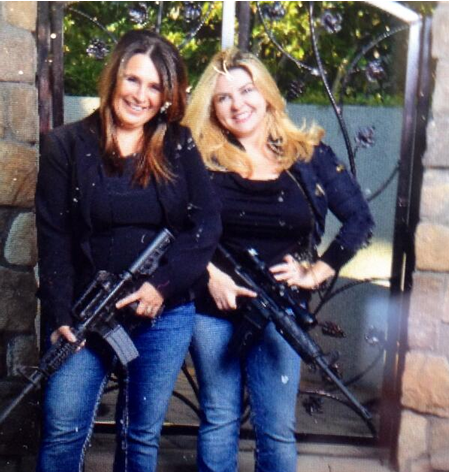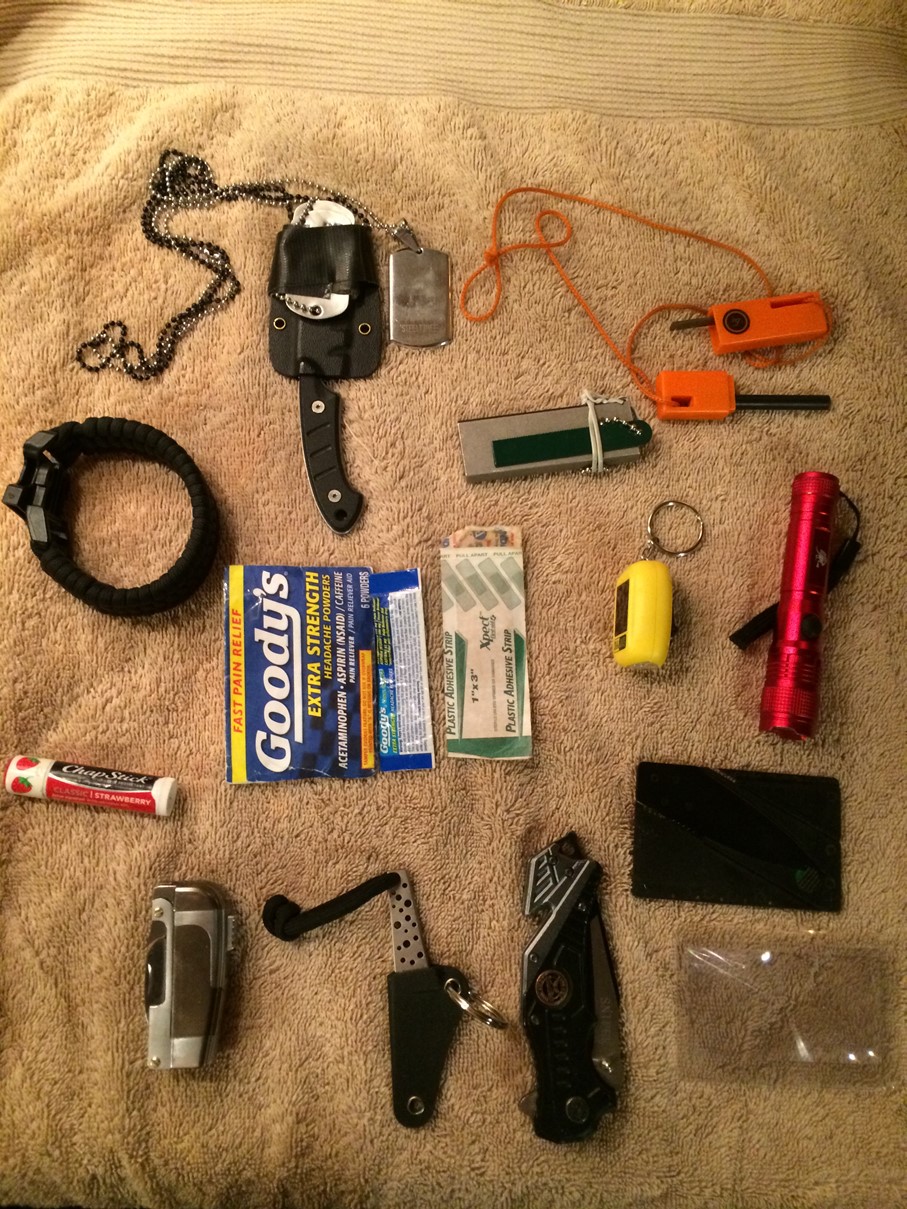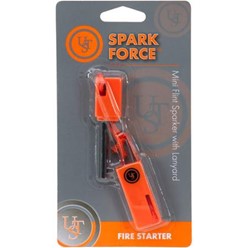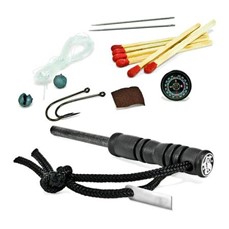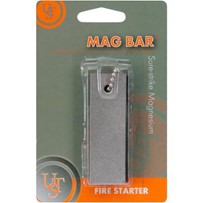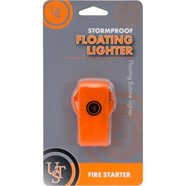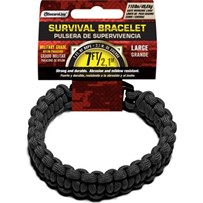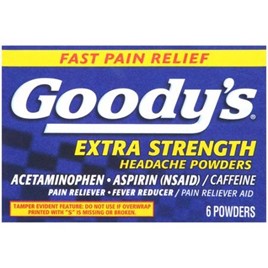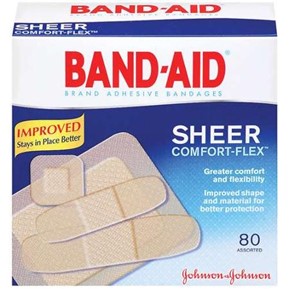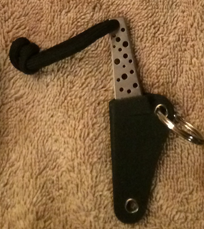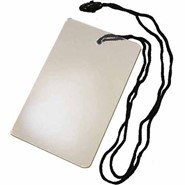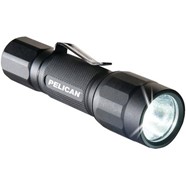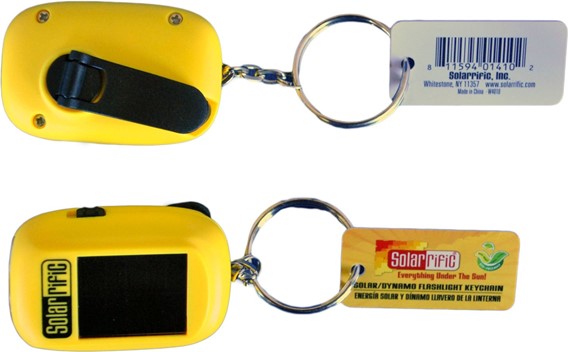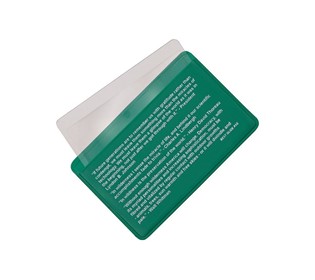As of today it is estimated that ONLY 1% of the population actually goes to much of any effort to prepare and store up enough of what they need to survive a true calamity. This means a huge majority of the population fails, yes fails, to have much of anything if and WHEN what they need each day to live evaporates quickly. Most people have no clue what life will be like after the grocery stores close. They simply cannot grasp the horrors that will befall those people that have not put away for tomorrow or prepared contingencies for life threatening emergencies.
Instead of taking some time, effort, and money to safeguard themselves and their families, they have a wide array of reasons (excuses) for why prepping is crazy and not at all necessary.
There exist a magnitude of what are called TRUE civilization altering or world-as-we-know-it ending events that could happen. Many have already occurred throughout history, as well as within just the last decade. The fact is , it’s only a matter of time before these catastrophes happen again.
People who choose not to prepare for their families will be faced with life and death situations that few have ever experienced before.
Without water people will die within a few days. Without food people will die within a few weeks. Without everyday necessities people will die in hordes from varying ailments and diseases. Without what they are accustomed to on a daily basis, people will suffer and most will die. This absolutely does not have to happen to such a high percentage of the population, but sadly it will unless more people understand there is no real excuse for NOT preparing. The following are 35 of the most common excuses and causes cited by the 99% of the population who don’t prepare.
1. Oh come on, it is never going to happen, my area is safe, I am safe.
Fact or Answer: The overall odds increase of having a mega or even a lesser catastrophe as the population grows and cities grow in size. Just like increasing the size of a target, it is easier and more likely to get hit. Even if your area doesn’t get hit, your location can be cut off from getting vital supplies from areas that DID get hit. Every single spot on the planet is a target, from natural disasters to terrorism to war to pandemics to a black swan event that no one expects. No one is invulnerable anywhere and living this way is delusional and totally unrealistic.
2. I am convinced that everything is recoverable and my area will get back to normal quickly.
Fact or Answer. The media and government have longed ingrained into people’s minds that no matter what happens, it is repairable. Fortunately up until now there has not been a type of event that is so severe and widespread that recovery is very long or requires massive clean-up involving millions of people and trillions of dollars. There are potential disasters that occur on regular time frames that could easily be ranked as hundreds of times worse than anything we’ve ever seen in our lifetimes. The New Madrid fault zone and San Andreas fault are a couple of examples. A solar induced super EMP (electro magnetic pulse) which occurred in 1812, 1857, and 1859 is another. Fukushima is a recent example how bad things can get almost in a matter of just 24 hours.
3. No matter how horrible it is, help will eventually come, I just have to wait it out.
Fact or Answer. Help can come IF there are people and resources available. All of the recent disasters have been fairly isolated and allow the majority of the unaffected population to come to the rescue of those in need. What happens when an entire country is affected – or most of the world? Assuming that your government or someone will reach your area with help and supplies no matter what is dangerous. The government is going to spread help to areas of the highest priority FIRST. Your area could be weeks or months away from help and you could be long dead before help and supplies arrive.
4. Even if something happens, there are plenty of food and supplies for everyone in my city.
Fact or Answer. Ever seen towns and cities cut off by winter storms? Food in supermarkets, food warehouse stores, and restaurants, are extremely limited – perhaps one to seven days at best. To prove this take your population where you live and divide this by the number of grocery stores in your city or town. Now go into one of these stores and look around and consider how fast a few hundred or a few thousand people could empty that store. You see all those trucks coming in each day carrying food and supplies for these stores. Imagine those deliveries stopping. Food will disappear faster than anyone can imagine.
5. My state government, my community, my neighbors will not abandon me and let me starve.
Fact or Answer. It’s a pure numbers game. If food and other necessities are not there for the state to distribute, then everyone who has failed to put away for such a disaster will go hungry. Your neighbors are likely to be in the same boat as you if 99% of the people don’t prep. Those that did prepare are likely to not share with a bunch of people that choose not to. Taking food from those that did store up will not be an easy task, as they will likely be well armed. It is extremely selfish to expect your neighbor to sacrifice their family because you determined that preparing was too much effort. Simply don’t be the 99% that don’t prepare.
6. I have a 3 day supply of food, the government and others tell me that this is plenty.
Fact or Answer. Three days go by awfully quickly, and as we saw in Hurricane Katrina help took much longer than that to arrive. If it is possible, a bare minimum of 30 days’ worth of food, water, and other supplies should be considered for all families. In the past, during “lightweight” SHTF events, help arrived 1-2 weeks after the disaster occurred such as areas hit by a great earthquake or mega hurricane. Severe disasters require much longer times for real help to arrive.
7. I have lots of credit cards, I will purchase anything I need in my city or nearby cities.
Fact or Answer. First of all, credit is something that ONLY works when systems connected to the outside world function properly. People think that these little “magical” pieces of plastic will save them in all circumstances. This misconception is something that will flatten those who go out and try to buy food because the banks are not allowing or are simply unable to process any credit or debit cards. Cash is necessary for buying what you need – have a fair amount in ALL denominations from 20’s down to 1’s. Additionally, if your backup plan is to drive to another city to purchase emergency supplies you may not be able to get out of your area due to lack of fuel or closed roads. Again, have your own supplies BEFORE it happens.
8. My water faucets will have water, even if it is temporarily shut off, they will not let us go thirsty.
Fact or Answer. Water pipes that bring water to your home require power, without power there is no water. Those expecting water trucks to bring drinking water to their neighbor should not count on it. Those who plan on drinking unsafe water from ponds, lakes, and other catchment basins are just asking to become very ill. If someone doesn’t store much food, at least there should be water stored for drinking. 1/2 gallon per person per day minimum, not to forget the household pets either. Water could be down for weeks. Cases of bottled water are one way to store water for longer terms and can be neatly stacked in a small corner of your home. Many stores sell safe water storage units that can be filled up with plain tap water. A good water filter is something that all households should have for outside water should city supplies be inoperable or contaminated. Learn how to catch rainwater and dew. Dehydration is something that will kill scores of people because they have not taken water storage seriously. Without clean water you’re dead in 72 hours.
9. There is no room to store supplies that will never be used anyway.
Fast/Answer. Vertical storage is one way even very limited amount of space can be used to put away what someone’s needs. There are all sorts of “dead spaces” around the home. Under the bed, closet shelves, or your garage are a couple of ideas. Square footage of a home is 2 dimensional, as there is usually about 8 feet of space up to down between ceilings to floor. Even people living in tiny apartments find room to store up emergency needs.
10. I can’t rotate supplies, everything will get old and have to be thrown away.
Fact or Answer. Many items can be consumed way past the ‘best by dates’. Those that feel that they still can’t store up items even in cans because of some use by or best by date, can store up a lot of other items that don’t have to be rotated. There are everyday items that can be forgotten about and will still be just as good as when you first stored it. Sounds crazy, but there are items that will fetch a high barter value that people need and want. Toilet paper is one key supply that can be traded for food and other items because it will never lose its demand. Other barter items such as cigarettes and alcohol have extreme value just about everywhere. It would be wise to always store up what you eat each day in cans, as canned foods have a very long shelf life so long as they are kept dry, cool and undamaged.
11. I don’t have extra money to store up anything for disasters.
Fact or Answer. There are many coupons online, in newspapers, and in stores. Manufacturers want to attract new customers to try their product so badly that they often offer food for free or near free. People live on coupons with very limited money sources using coupons. Stores also offer reduced pricing on overstocked items. Collecting these supplies will add up if one is willing to start doing so. Never pass up an opportunity to get something for free, especially if it can be stored for later use or barter.
12. It is too much work to bother with.
Fact or Answer. Even a person that is hardly an expert prepper who has stored up something will fare far better than the 99% that have not. Simply picking up extra food and other supplies at the market each time and putting these into boxes in some isolated part of the home will add significant reserve supplies. This is very limited effort that will reap huge results WHEN you need it. You don’t have to work that hard to put away a decent amount of what you will need someday.
13. I have absolutely no idea what to store or how much.
Fact or Answer. What do you use each day and every week? This is what you want to store up. Buy your regular household staples in jars, bottles, or well-sealed packages for longer term storage. How much can be determined simply by asking yourself, ‘how long do I want to be self-sufficient during a disaster?’ Have a time frame – a month, two months, etc. You should be able to easily determine how much of something you will use in a certain amount of time.
14. I don’t need any protection after a disaster, the police, National Guard, military will protect us.
Fact or Answer. Even those that don’t like firearms should consider owning one. The larger the distance between an attacker and your family, the less chance that someone you love will get injured or killed. A firearm gives you this distance. At least have something to defend your family with. There are some real psychos out there that will certainly take advantage of the lawlessness that will come with no police or military force. How many police does your city have per citizen? This ratio is one golden reason to have self-protection before, during, and after a disaster. There may be no way of reaching law enforcement even if they are available after a true disaster as all cell towers and phone lines may be fried for whatever reason.
15. The power grid will come back on, until then I have LED flashlights that last forever.
Fact or Answer. First of all when they say on commercials that the light will last for 100,000 hours they are referring to the bulbs. Batteries run out of energy. You should have many extra batteries to avoid the dark with LED lights. Many accidents happen in the dark and flashlights should not be the only source of lights. Candles are cheap and last several hours and can be used to warm up food and a small heat source. You don’t want to live nights without some source of light – it will get so dark sometimes that you won’t even be able to see your hand in front of your face. Besides light, the power grid may not come back up for weeks, or ever if something catastrophic enough has happened. Another grave consideration is what is called temperature control of your environment as excessive cold or heat kills hundreds or thousands of people in stable times every year. You will likely lose the ability to stay cool or warm in the event of a power grid failure. Weather insulation of your surroundings before anything occurs is a preparation that many should consider doing NOW. A back-up electric generator with back up fuel is one option. For those who can afford it or know how to build it themselves, a solar or wind driven electric system is a viable long-term solution. You may have to live a long time without power, as the grid is a lot frailer than people realize, so consider alternative energy supplies now.
16. Again and again I hear these fear mongers exaggerate the threat level, another false alarm.
Fact or Answer. While Y2K, the Mayan calendar and many others have been wrong, there have been many times when a disaster has been a lot worse than anyone could have predicted. Two of the most powerful tsunamis caused calamities that rank the worst of all time — one is widespread radiation release in Japan, and event that is likely killing people as you read this. Hurricanes Katrina, Rita, Wilma, and recently Sandy were far worse than predicted. Tornadoes have destroyed entire cities. Deepwater Horizon caused the worst oil disaster on record. Many wars and terrorist attacks have brought untold suffering in this century alone. These are still lightweight disasters and are dwarfed in comparison to what has happened before and will happen again. Preparedness is the only answer for the common person to help survive what is eventually coming.
17. I have a good car and family in other areas, if anything happens I will just go stay with them.
Fact or Answer. One of the worst assumptions is that family or friends will openly accept you and yours and let you live with them. Even if they do, you may not be able to get to them. Your car or vehicle may be disabled for any number of reasons, or the roads may be unusable because law enforcement will not allow ANY travel or because they have been destroyed. Planning on how to stay safe where you are should be your foremost option. Bug out only as a last resort (unless you have a complete bug out strategy and destination already in place).
18. I work all week long and I am going to spend my extra money on fun rather than fear.
Fact or Answer. Self-indulgences seldom have much or any lasting benefits. People often blow their money on something that was nothing more than fleeting fun. In the end it is often expensive and worthless. A good plan is to do anything that will bring long time enjoyment and help you live your life with less stress. The amount of stress you and your family will suffer after a true disaster strikes and you have nothing to feed yourself and your family will be well beyond what any job or most of life’s agonies can bring. Entertainment can help live life better. Not storing up for emergencies can help end your life in true anguish.
19. Survival supplies taste bad, I can’t live on this for long at all.
Fact or Answer. Some supplies have high sodium contents, others are near or at gourmet levels. Practically everything that someone enjoys can be found in a can at the supermarket or other food retailer. Just because food is stored up, doesn’t mean that it has to taste bad. Most of what people cook for everyday meals – rice, beans, flour, oatmeal, etc. – can be stored for quite a while.
20. If a true catastrophe occurs we are going to die anyway, besides that I don’t want to live through it anyway.
Fact or Answer. To each his own, but when you look at the faces of your family or your own face in the mirror, this feeling kind of changes its tone. Even during the worst disaster there are going to be survivors, why should it not be you and your family? Here is something very few people understand – after a very bad catastrophe the planet and the life, vegetation and animals, have a remarkable recuperative ability. In other words, times are likely to get better each day after a true disaster. There are of course exceptions, but in all likelihood there will be slow to moderate improvement as time goes on. The main objective to have enough of what you need to get through the worst parts of it.
21. Survival and prepping for the worst is negative, as long as I stay positive, only the positive will happen.
Fact or Answer. One of the most positive things is to have what you need when the situation presents itself. Too many people live like the proverbial ostrich with its head buried in the ground. Not being realistic with worldwide situations that are way beyond your control is negative. It is denial. Wishing that the economy will not collapse, a mega earthquake will not hit an area way overdue, that war will not develop in the Middle East and so on, will most likely not work. Prepping and being ready for such an event(s) will work to help better safeguard you and your family and increase your chances of surviving it dramatically.
22. Preppers / Survivalists are radical, paranoid, conspiracy driven out of touch with reality, I don’t want anything to do with them.
Fact or Answer. Out of touch with reality is depending on the government to come to your rescue when they simply can’t because of the magnitude of a particular disaster. Preparing and storing up food, water, and other needs has nothing to do with associating with anyone but your immediate family and friends. If you don’t like preppers and their way of thinking, no one is saying you have to become friends with anyone to store up what you need for later. Letting your personal views of people that prepare influence your family’s well-being for the future makes no sense. Buying insurance in the form of what your family will need after it becomes no longer available for an undetermined period of time makes excellent common sense for everybody.
23. I don’t know why everyone is so worried, times are better and safer now than ever in human history.
Fact or Answer. The old doomsday clock put out by the Bulletin of Atomic Scientists puts the clock at 5 minutes to midnight. Since 1960 the clock has only been closer to midnight between 1981-1988 during the height of the cold war. In 1991 it was set at 17 minutes to midnight. Most of the time it was set 7 minutes or higher. As competition grows with increasing population, resources grow less plentiful. While it can be argued that the earthquakes, volcanoes and other natural disasters are all part of a regular cycle, man-made conflicts and needs are something never experienced with 7 billion people trying to get what they need out of limited resources of water, food, arable land, energy and much more. If anything, times are becoming a lot scarier and gives even more support to the notion of preparing to what the future may hold for us.
24. There is so much to prepping, I’ll take my chances that nothing will happen.
Fact or Answer. There is a lot to knowing what to do after a disaster, but it takes little no know to simply put away what you need every day in life. Just the simple act of putting away canned food and water and other necessities like toilet paper will put you into a better situation that most of the people you know. Those people that even put away a month’s worth of what they need will likely survive better than at least half of the population after a mega SHTF event. Just start putting away and continue it and someday you will probably be grateful you did.
25. All my investments go right into what makes me money and gives me security for the future.
Fact or Answer. Many people cannot find a better investment for the future than to have what they need within arm’s reach. Banks are closed most of the time, and online trading is only good if the internet and phone lines are up. While having a stable portfolio is important, especially if nothing happens, not having an investment in the things you use each day to live life with ease makes no sense. Buying stocks in precious metals is equally worthless compared to actually having the precious metals in your hands or you’re safe in a situation when the stock and commodities markets collapse or are inaccessible.
26. Why bother storing up that much food and supplies, mobs will just come in and take it.
Fact or Answer. If you tell everyone that your house is a grocery store, then when something does happen you can expect big problems. If no one knows you have food, it is much less likely you will have any mobs come after you. Good self-defense is essential to guard your supplies as many people are cowards and just don’t have the gall to try to force themselves in while being shot at, many times people will back off just because there is a gun aiming at them. Also something to consider is that many people will become quite weak after lack of food and water and after a few days the threat level will diminish significantly.
27. I have a refrigerator and a cupboard full of food, 2 cases of water, a 12 pack of toilet paper, I am all set.
Fact or Answer. So many people are totally clueless to what they DON’T HAVE. First of all the water of 2 cases will be used up in 3-4 days by a family of four. If the power goes off everything in the refrigerator will have to be eaten within a couple of days. A cupboard full of food is not a bad start, but most pantry sizes would store about a week’s worth of supplies. Something is always better than nothing, but people need to see just how much they actually need for a certain amount of time. Exaggerating what you actually have is very counterproductive – and poses a risk to the well-being of your family should disaster strike.
28. If something happens I will just run to the grocery store and stock up before it closes.
Fact or Answer. This is not a bad idea if you see a crisis is imminent. For many preppers, heading to the grocery store at the first sign of trouble and adding goods to what they already have, such as fruit and vegetables that will perish within a short time, may help reduce psychological and physical strains of the initial impact. Depending on this as a plan to stock up because you have nothing in your current supplies, however, is not a good idea and quite dangerous. What will you use to purchase what you need? Do you have cash on hand to purchase these last minute supplies or are you planning on using your possible inactive credit or debit card? Even with a wad of cash, the stores might not be open. Your best course of action is stock up before anything happens, you cannot depend on any store to provide what you need after a disaster.
29. If we become sick after a disaster we have good medical treatment centers that will care for us.
Fact or Answer. Medical response could be overwhelmed and could takes days or weeks to come back online. It is likely that the number one killer after a calamity will be disease. Extreme preventative care of yourself and your family is all too essential. Germ control and ‘hand awareness’ of germs is top priority here. Storage of anti-bacterial soaps, bleach, and other disinfectants are something no home should be without. Investment in a really well stocked first aid kit is an excellent survival item for everyone.
30. Nothing is as bad as it ever seems, stop overblowing everything as doomsday.
Fact or Answer. Tell that one to Hurricane Katrina and Sandy survivors that were told it would not be that bad by the mass media. Tell people in Haiti or people devastated by the two killer mega tsunamis about it not being all that bad. Ask people who went through World War 2, the Korean or Vietnam War, or in Syria or Iraq how much less worse it was. Preparing for the worst means that you can much better handle those worst-case scenarios that have occurred regularly throughout history.
31. If disaster strikes everybody will band together and save the day.
Fact or Answer. Nice sentiment, but throughout history this idealism has proven to be less than reality. Take away the hope of recovery with a bad enough situation and people revert back to the survival of the fittest. Depending on the good will of human nature can and does lead to vast disappointment and individual disaster. Depending on your own self and what you can put away is a lot more stable and reliable.
32. People have become way too civilized to wage a world war and take what you have and act like savages.
Fact or Answer. There are too many examples to disprove this of people’s nature. Given the severity of the circumstances, people are capable of anything as long as most of them can JUSTIFY their actions in their minds. Trust in yourself and then others. Trusting in society’s self-righteousness to not act like criminals is a true stretch. Good self-defense and a cautious nature will take you far.
33. There are food banks and emergency preparedness places nearby to me, they will take care of us.
Fact or Answer. It is all about volume, these places are meant to feed people on a SHORT TERM basis to keep people from starving to death immediately. You will likely have to exist on a snack size package of crackers and maybe an energy bar per day. You might get a couple of bottles of water if you are lucky. Depending on these places for handouts is a losing proposition with any disaster that is even moderately tragic. You could store up way more from a couple of weeks’ worth of extra items bought at the store than what these places are likely capable of feeding you with.
34. FEMA , the Red Cross, and other government agencies are huge and have the whole country backing them.
Fact or Answer. Even if these organizations and government agencies can get to you, their supplies and what they can give out is severely limited, much like local and state run emergency preparedness centers. Think about just how many people one million is and how much daily food that means. Try to think of tens of millions of people needing all sorts of food, clean water and other supplies. The logistics of distribution on this scale is a nightmare for any planner. Even if there was enough food, imagine standing in 4-10 hour lines to get some crumbs and a drink of water. Now imagine going into a room of your house and simply getting what you need. Kind of makes the idea of prepping sound a lot better doesn’t it?
35. I can always wait until tomorrow to start prepping, there is always time.
Fact or Answer. No there isn’t always time. Eventually that tomorrow does come. When world or national events have deteriorated enough to scare many more people into prepping it is probably too late. The best time to start preparing was yesterday, the next best time is right now. Every day that goes by without putting away what you need is going to make it that much more difficult to store up enough of what you need for survival. Time runs out quickly, start preparing today and find out how rewarding it is when you have what you need right there in your own home.
It is not an overblown statement that says 99% of the population could perish during the next mega calamity based on the sole reason that they did not prepare. Without food, water, means of keeping yourself clean and disease free, and the many other necessities that people have become way too dependent on to survive everyday life, people cannot live and won’t. Those rare 1% that choose to prepare and sacrifice those everyday pleasures and expensive distractions will have what they need as flocks of those unprepared will die in massive numbers because society can no longer support them. Those 99%, though, have the conscious choice of not becoming a statistic and truly doing something about it with a lot less than they realize. All it takes is some time, effort and dedication to spending any available extra money and resources on living “life insurance” such as food, water, and everyday needs.
Start now to make sure you are staying prepared.
Via: shtfplan
 Follow
Follow
